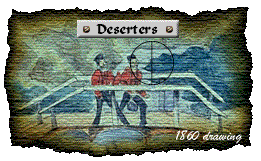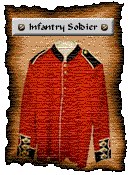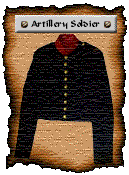
![]()
Drummers, Fifers and Military Bands
The History of the British Uniform
![]()
Since desertion was such a problem, soldiers under the rank of sergeant were not permitted to own civilian clothing. With only their uniform to wear, they would easily be spotted if they tried to desert.

Red Tunics indicate that the wearer is a member of the infantry. Soldiers were supplied with their uniforms, while officers purchased their own.

Officers' uniforms were of a much finer weave of wool, usually doeskin, while the rank and file had uniforms made of melton (wool) and to a lesser extent, serge.
Different ranks could also be identified by the piping around their tunics: Infantry officers had gold braid, while ordinary soldiers had white lace. Militia officers had silver piping.

Members of the Royal Artillery had uniforms composed of a midnight blue, this dark colour helping to hide the dirt picked up while working around the guns. Again the common soldier was supplied with uniforms made of serge, a rough weave of wool, while officers purchased their own uniforms made of doeskin. For piping, officers and senior non-commissioned officers wore gold braids while the men had yellow-worsted braid.

![]()